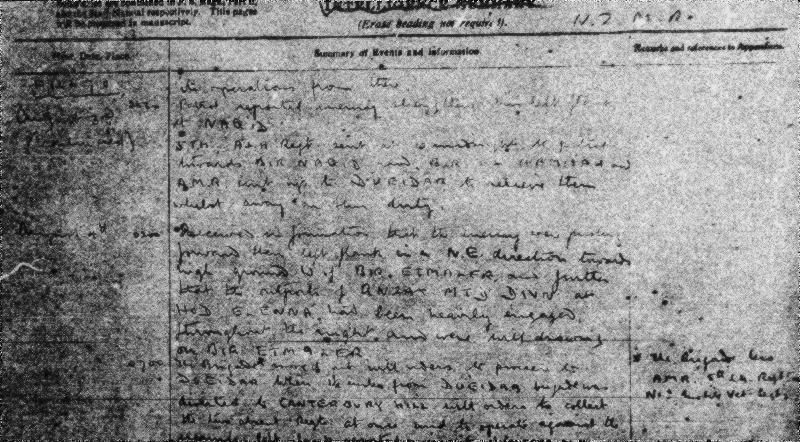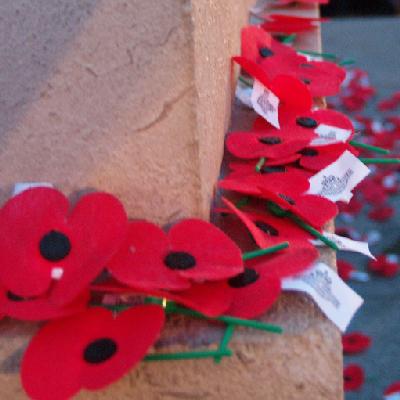Topic: AIF - NZMRB
Battle of Romani
Sinai, August 4 to 5, 1916
NZMR Bde, War Diary Account

The transcription:
4 August
0200 - Received information that the enemy was pushing forward their left flank in a north east direction towards high ground west of Bir Et Maler and further that the outposts of Anzac Mounted Division at Hod el Enna had been heavily engaged throughout the night and were withdrawing on Bir Et Maler.
0700 - The Brigade moved out with orders to proceed to Dueidar. When 1¼ miles from Dueidar Brigade was directed to Canterbury Hill with orders to collect the two absent regiments at once and operate against the enemy's left flank reported in vicinity of Canterbury Hill
1100 - Brigade (strength was increased by six Troops, Auckland Mounted Rifles Regiment) arrived at high ground 1½ miles south east of Canterbury Hill. Turks seen (about 2,000) busily entrenching on Mount Royston and hills to the north.
1130 -
Touch was gained with Anzac Mounted Division on the left and 5th Mounted Brigade (from Gilgan) on the right.
Enemy's advanced posts were then attacked and driven in supported by Royal Horse Artillery Battery. Further advances however then checked.
1450 - General Officer Commanding 2nd Light Horse Brigade arrived with message from general Officer Commanding Anzac Mounted Division stating that the two Brigades at Bir Et Maler could not move out until Mount Royston had been cleared. General assault arranged with 5th Mounted Brigade and ordered for 1645.
1645 - General Assault, supported by Royal Horse Artillery Battery.
1700 - Mount Royston rushed and 250 Turks surrendered.
1715 - The 127th Infantry Brigade was now approaching from the direction of Pelusium and came in eventually on the left of the Brigade as support.
1745 - Enemy continued to surrender on ridges north of Mount Royston, being heavily enfiladed.
1830 - Hills finally cleared and handed over to Infantry.
1915 - The Brigade moved to Pelusium to bivouac.
5 August
0530 - The Brigade left Pelusium in a south easterly direction to Bir en Nuss the guns and limbers going by a more southerly route (via Dueidar) where one Section of the Battery was left, the other proceeding with double teams.
0830 - Brigade arrived at Bir en Nuss where the 3rd Light Horse Brigade and 5th Light Horse Regiment were found watering also one Squadron Auckland Mounted Rifles Regiment. The Brigade having watered proceeded towards Qatia along the telegraph wire, the guns not having as yet rejoined the Brigade.
The 3rd Light Horse Brigade moved forward on our right via Nagid and Hamisah.
1215 - The New Zealand Mounted Rifles Brigade reached the high ground two miles west of Qatia.
A conference of Brigadiers was held and the attack on Qatia oasis ordered, where the enemy was reported in force.
1415 - General attack by 5 Brigades as per plan and the south west and western end of the oasis occupied.
1715 - 3rd Light Horse Brigade withdrew exposing the right flank of New Zealand Mounted Rifles Brigade.
1730 - Enemy reinforced his left flank and our right was very heavily pressed. (Canterbury Mounted Rifles Regiment.)
1900 - Brigade withdrew and moved to bivouac at Katib Gannit.
0300 - Arrived Katib Gannit, special guide having lost his way.
Note: On arrival water very scarce.
The Royal Horse Artillery Section joined the Brigade; on arrival at bivouac having been all day coming up owing to the very heavy going between Dueidar and Qatia.
6 August
0400 - Four Officers' Patrols left to reconnoitred for the Infantry Divisions attacking Qatia.
0600 - The brigade, less Canterbury Mounted Rifles Regiment who followed after watering, moved forward to Qatia which was found unoccupied.
1030 - The Brigade again moved east to join touch with the enemy who was found entrenched across the telegraph line 1½ miles east of Hod umm Ugba. Heavy artillery fire was opened on us and kept up till dark.
Roll of Honour
Battle of Romani, Sinai, August 4 to 5, 1916, Roll of Honour, New Zealand Mounted Rifles Brigade
Lest We Forget
Further Reading:
New Zealand Mounted Rifles Brigade
New Zealand Mounted Rifles Brigade, Roll of Honour
Battle of Romani, Sinai, August 4 to 5, 1916
Bir el Abd, Sinai, 9 August 1916
Battles where Australians fought, 1899-1920
Citation: Battle of Romani, Sinai, August 4 to 5, New Zealand Mounted Rifles Brigade, War Diary Account




